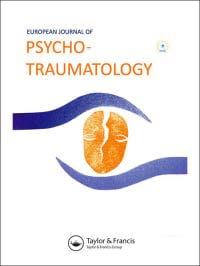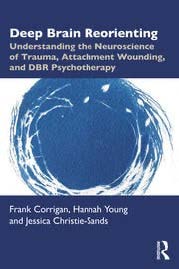Deep Brain Reorienting (DBR)®
Deep Brain Reorienting (DBR)® is a trauma therapy which aims to access and process traumatic experiences that have given rise to various symptoms and suffering. The treatment traces and maps the original sequence of physiological reactions that occurred when structures in the brain stem were alerted to threat or attachment disruption.
What is DBR?
The uniqueness of DBR is that it realizes a natural healing process that is consistent with the evolutionary process of brain and nervous system development.

DBR Background
Deep Brain Reorienting (DBR)® was developed by Dr. Frank Corrigan to treat shock after attachment loss/injury but is also used to process other unresolved traumatic experiences that an individual may encounter in life.
The indication that one or more past events continue to have an impact is that there are clinically significant symptoms that would not have been present if the experiences had not occurred. These painful experiences have been stored deep in the brain, specifically in the brainstem and can lead to symptoms associated with PTSD /CPTSD. DBR aims to get to the core of the traumatic experience by following the original physiological sequence in the brainstem that occurs with immediacy in response to threat and/or attachment damage. This can occur, for example, in the case of an experience of abandonment in infancy, which in itself can lead to a fear of not surviving.
DBR Publications
The first study on DBR conducted by Dr. Ruth Lanius' team was published in 2023. The results showed significant symptom improvements in people with PTSD, and after receiving DBR therapy, many participants no longer met the criteria for a PTSD diagnosis.

A randomized controlled trial of Deep Brain Reorienting
Published online August 15 by European Journal of Psychotraumatology. Volume 14, 2023 - Issue 2

The book
The first book about DBR was released at the end of 2024. Sebern Fisher, Trauma and Neurofeedback therapist, writes in his review of the book, among other things, that DBR enables a conversation with the unconscious by focusing on the role of the brainstem in trauma.
Dr. Ruth Lanius on the DBR:
"Given what we now know about the neurobiology of PTSD and how the brain processes shock and traumatic experiences, it's very important that we integrate neuroscientifically-guided therapies into PTSD treatment. DBR is one such treatment.
DBR is a neuroscience-based treatment for PTSD that targets the sequence of events that occurred in the brainstem at the time of the traumatic event.
The sequence of events at the time of the initial shock during a traumatic event occurs through 3 areas of the brain in the brainstem and the midbrain: the superior colliculus, locus coeruleus, and periaqueductal gray."